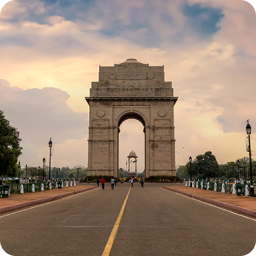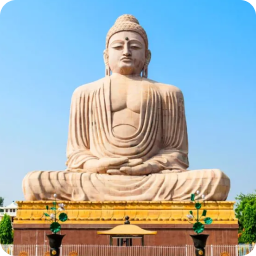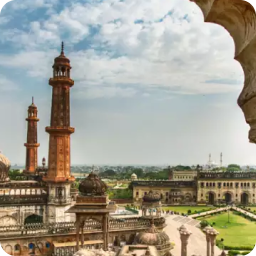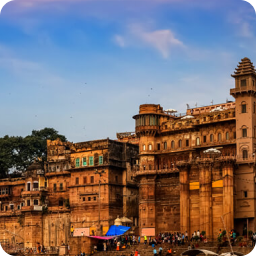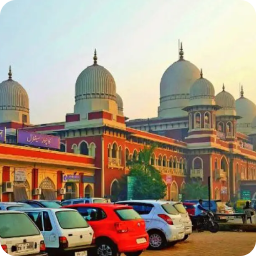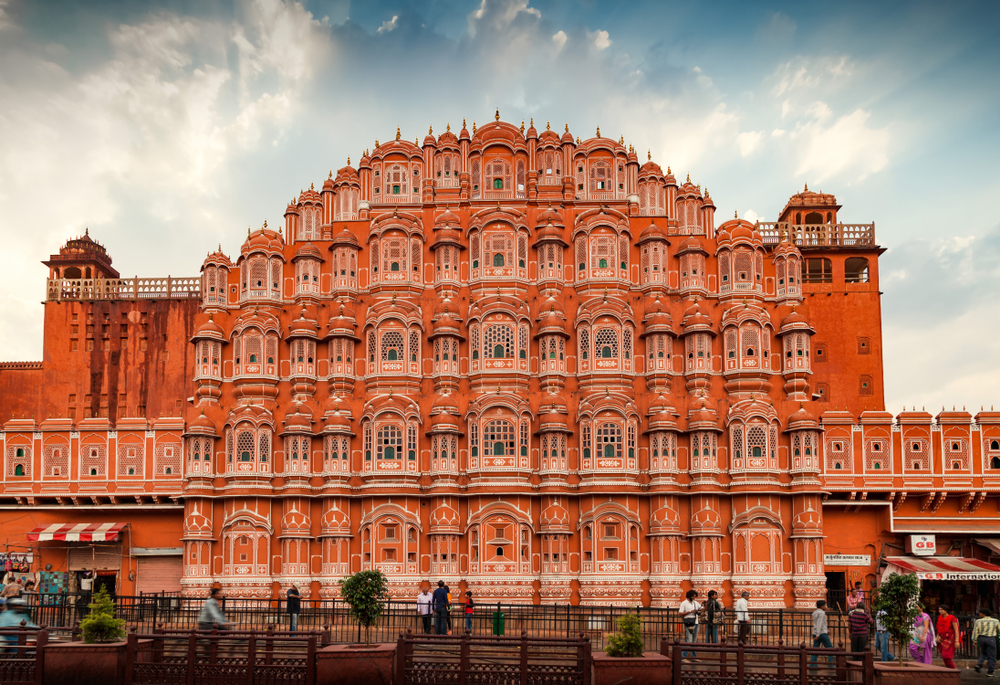Vice President of India: Powers, Elections and Constitutional Significance |
Role and Authority of the Vice President of India: Insights for Competitive Exams
Aspirants aiming for competitive exams, including the IAS, must grasp the role of the Vice President of India. This aspect is crucial for the polity syllabus. The Vice President, elected for a 5-year term and holding the second-highest office, isn’t directly elected by the people. Parliament can remove the Vice President through a resolution. Additionally, the Vice President serves as the ex officio Chairman of the Rajya Sabha.
Vice President of India: Constitutional Office and Evolution
- Article 63: The office of Vice President of India.
- The Office of Indian Vice President is modeled on the lines of an American Vice President.
- The second-highest constitutional office in India ranks only next to the office of PRESIDENT OF INDIA in order of precedence.
- VP is also ex-officio chairperson of Rajya Sabha (Art.64)
- The original Constitution stated that the Vice-President would be elected by a joint session of Parliament. This procedure was simplified by the 11th Constitutional Amendment Act of 1961.
- First Vice President of India: Dr. S. Radhakrishnan (1952)
- Present Vice President of India: Venkaiah Naidu (Since 2017)
Indirect Elections of President (Art.54) and Vice President of India (ART. 66)
- The vice-President is elected by the method of indirect election (Like president) and not directly by the people.
- He is elected by an electoral college comprising members from both Houses of PARLIAMENT.
| Elections of Vice President (Art. 66) | Elections of President (Art.54) |
|
|
|
|
|
|
| Consist of both elected and nominated members of the Parliament only. |
|
Distinctions between Elections of President and Vice President of India?
- The President serves as the head of the State, with authority extending over both the administration at the Centre and in the states.
- This entails, it is necessary that, in his election, not only members of Parliament should play their part, but the members of the state legislatures should have a voice.
- The normal functions of the Vice President of India are to preside over the council of states.
- Only rarely, and typically for a temporary period, may he be required to assume the duties of the President.
Vice President of India: Qualifications and Nomination Process
- He should be a citizen of India.
- He should have completed 35 years of age.
- He should meet the qualifications for being elected as a member of the Rajya Sabha.
- He should not hold any office of profit under the Union government, state government, local authority, or any other public authority.
- The nomination of a candidate for Vice-President must be subscribed to by at least 20 electors as proposers and 20 electors as seconders. (For the President, this requirement increases to 50 proposers and seconders)
Oath and Affirmations of Vice President of India (ART. 69)
- Before entering upon his office, the Vice-President has to make and subscribe to an oath or affirmation.
- The oath of office to the Vice President of India is administered by the President or some person appointed on that behalf by him.
Conditions and Tenure of the Vice President of India
- He should not be a member of either House of Parliament or a House of the state legislature.
- If a person is elected Vice-President, he is considered to have vacated his seat in that House on the date he assumes office as Vice-President.
- He should not hold any other office of profit.
| Sitting President or Vice-President of the Union, the governor of any state and a minister for the Union or any state is not deemed to hold any office of profit and hence qualified for being a candidate for Vice-President. |
Tenure and Role of the Vice President of India
- The Vice President of India holds office for a term of five years from the date on which he enters his office.
- He can resign from his office at any time by addressing the resignation letter to the President.
- The Vice President of India can continue in office beyond the five-year term until a successor assumes charge.
- He is also eligible to be re-elected to that office for an unlimited number of terms.
Vacancies in the Office of the Vice President of India
- A vacancy in the Vice-President’s office can occur in any of the following ways:
- At the end of his five-year tenure.
- By his resignation.
- On his removal.
- By his death.
- When he becomes disqualified or his election is declared void..
- When the sitting Vice-President’s term is expiring, an election to fill the vacancy must be held before the term expires.
- If the office falls vacant by resignation, removal, death, or otherwise, then the election to fill the vacancy should be held as soon as possible after the occurrence of the vacancy.
| The newly elected Vice-President serves a full five-year term starting from the date he assumes office. |
Vice President of India: Removal Procedures and Filling Vacancies
- He can also be removed from the office before the completion of his term.
- No ground have been mentioned in the Constitution for his removal.
- A formal impeachment is not required for his removal.
- Resolution for removal can be introduced only in the Rajya Sabha and not in the Lok Sabha, with at least 14 days’ advance notice has been given.
- Resolution for removal should be passed in the Rajya Sabha by an effective majority (the majority of all the then members of the Rajya Sabha) and in the Lok Sabha by a simple majority.
- It should be noted here that the effective majority in India is a form of special majority and not a distinct one.
- In such cases of temporary vacancy in the office of the Vice President, the Deputy Chairman of the Rajya Sabha assumes the role of its Chairman.
- In essence, the Vice President’s role is to support the President as the ceremonial head of the Republic of India.
- However, it is important to note that according to the Constitution of India, the offices of the President and Vice President cannot be held by the same person.
Supreme Court’s Adjudication on Election Disputes for President and Vice President of India
- All questions and disagreements regarding the election of the Vice-President are investigated and resolved by the Supreme Court, with its decision being final.
- The election of a Vice-President cannot be challenged on the grounds of an incomplete electoral college (i.e., vacancies among its members).
- If the election of a person as Vice-President is declared void by the Supreme Court, acts done by him before the date of such declaration of the Supreme Court are not invalidated (i.e., they continue to remain in force).
| Similar to the Indian vice-president, the American vice-president also acts as Chairman of the Senate – the Upper House of the American legislature. |
Emoluments of the Vice President of India
- The constitution has not fixed any emoluments for the vice-president in that capacity.
- He draws his regular salary in his capacity as the ex-officio chairperson of Rajya Sabha.
- When the Vice President of India acts as President or discharges the functions of the President, he is entitled to the salary or allowance payable to the President.
| When Vice-President acts as President or discharges functions of the President, the Vice-President does not perform the duties of the office of the chairman of Rajya Sabha. During this period, those duties are performed by the Deputy Chairman of Rajya Sabha. |
POWERS AND FUNCTIONS OF THE VICE PRESIDENT OF INDIA
The Vice President of India, after the President, is the highest dignitary of India, and certain powers are attached to the office of the Vice President. These are:
- He serves as the ex-officio Chairman of the Council of States, with powers and functions similar to those of the Speaker of the Lok Sabha.
- He assumes the role of President in the event of a vacancy in the office due to resignation, impeachment, death, or other circumstances.
- He can act as President for a maximum period of six months, during which a new President must be elected.
- Additionally, in cases where the sitting President is unable to fulfill his duties due to absence, illness, or any other reason, the Vice-President assumes these responsibilities until the President resumes office
Vice President of India and American Vice President: Comparative Analysis
| Indian Vice-President | American Vice-President |
|
|
|
|
|
|






